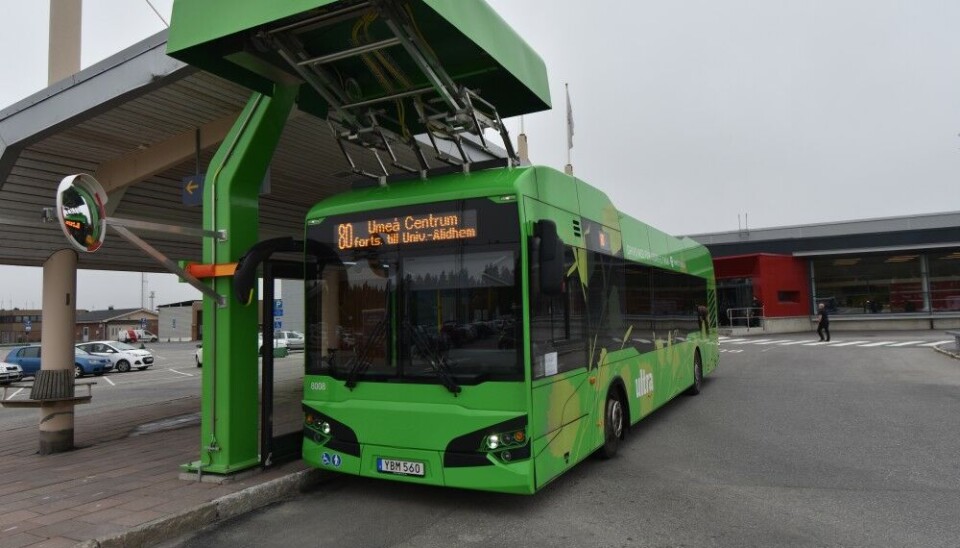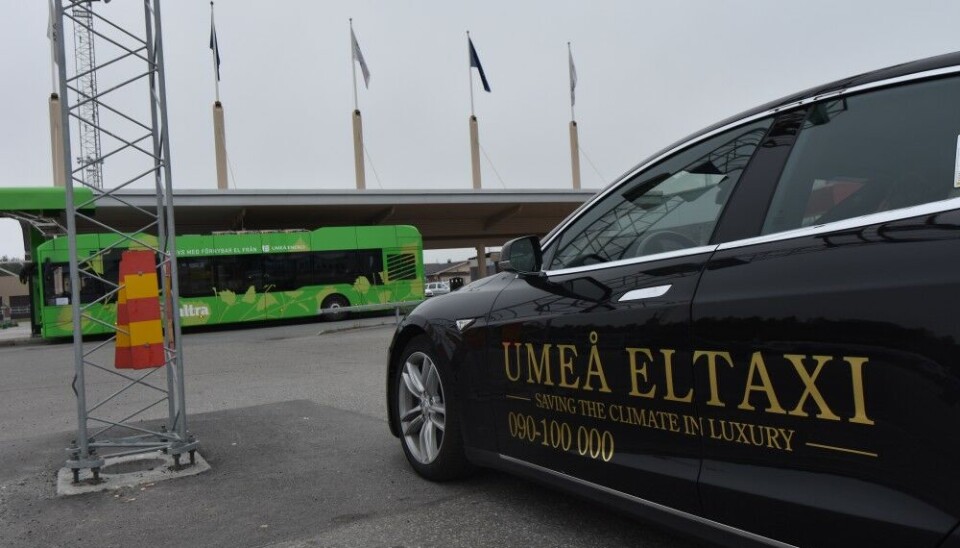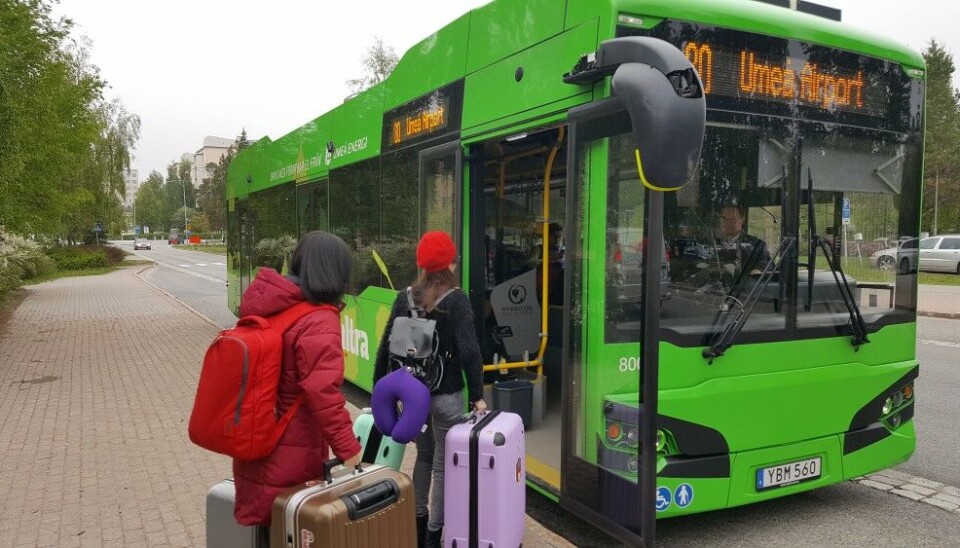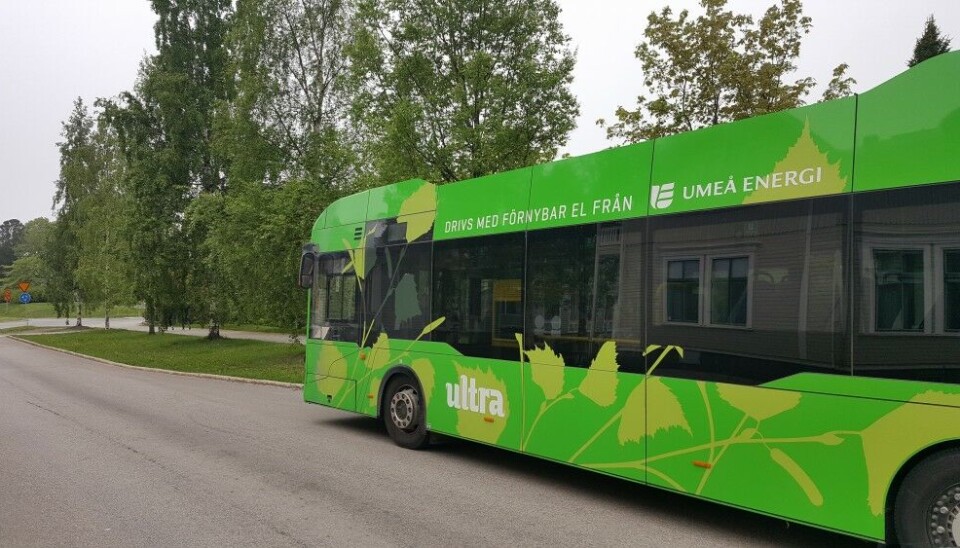Umeå paves the way for green electric bus revolution
This northern Swedish City’s fleet of battery powered busses for public transport works perfectly well in cold climate.
p.p1 {margin: 0.0px 0.0px 0.0px 0.0px; font: 11.0px Helvetica; color: #000000; -webkit-text-stroke: #000000}p.p2 {margin: 0.0px 0.0px 0.0px 0.0px; font: 11.0px Helvetica; color: #000000; -webkit-text-stroke: #000000; min-height: 13.0px}span.s1 {font-kerning: none}
«This bus can be on route for one and a half hour on the batteries,» says driver Lars Öberg. At the end-station for the airport express bus, Öberg simply presses one button and a devise on the roof automatically connects to the charger.
The charging station at Umeå airport was when opened Europe’s most powerful. With an expandable output of 400 kW, it is more than 3 times bigger than Tesla’s super chargers. They have up to 145 kW power, but that distributed between two adjacent Tesla cars.
According to Hybricon Bus System, who builds the busses, next goal is a 500 - 1000 kW charger the fill the batteries within 2-3 minutes at the end-of-route stations. The company’s headquarter and production facility is in Holmsund outside Umeå.
«The climate in relative proximity to the Arctic Circle is a perfect testing environment for cold-testing the company’s products,» Hybricon says in a promotion.
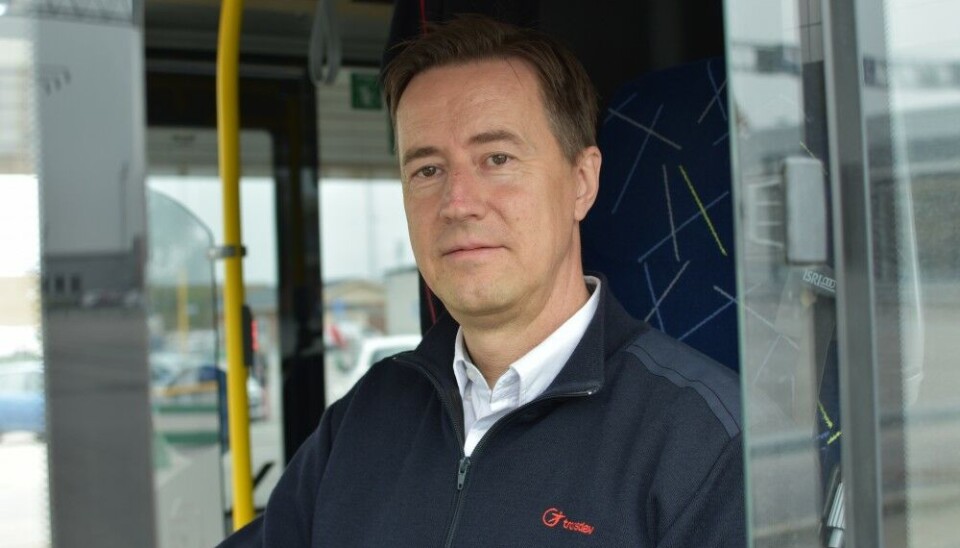
«For me, the is no difference when driving in winter compared with summer,» explains Lars Öberg. He is very happy with the electric busses. Less noise, less vibrations and more happy passengers.
Today, 12 busses runs on batteries along the public transport route network in Umeå.
Ambitions are higher, though. Within the next five years, all busses that operate the major routes are to be replaced battery powered vehicles. At least 24 more of the larger articulated 4WD busses will be bought. So, by 2022, 80% of all public bus-traffic runs electric with zero emission. Umeå takes its climate responsibility serious.
No problem in -20°C
The so-called LTO batteries developed for the busses are possible to charge ultra-fast. Three to five minutes of charging gives one hour operation. Even in winter, when Umeå temperatures can drop to below -20 degrees Celsius and electricity is also used to heat the cabin.
Costs? Yes, the busses are naturally more expensive to buy since it is an innovation project, but in the longer run; operating the busses with the current prices on electricity are done for one fifth of the fuel costs compared with a bus that runs on diesel.
Hybricon Bus System sees the world as a global market. If it works in northern Sweden, its works everywhere.
For the City of Umeå, however, better air-quality is the best price. At Vasaplan in the city centre, a new modern bus terminal is under construction. Public transport running on renewable energy is about to make Umeå to one of the most environmental friendly cities in Europe.

